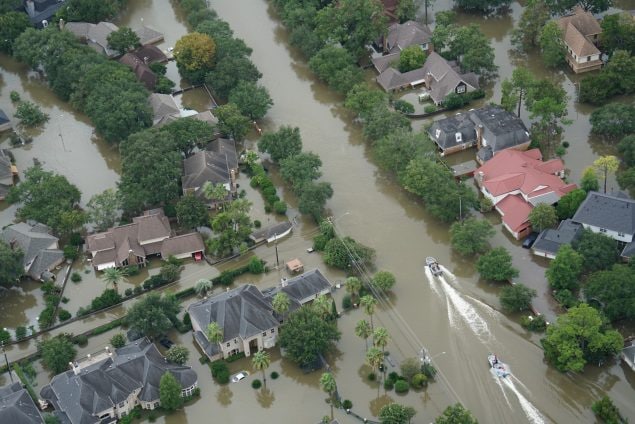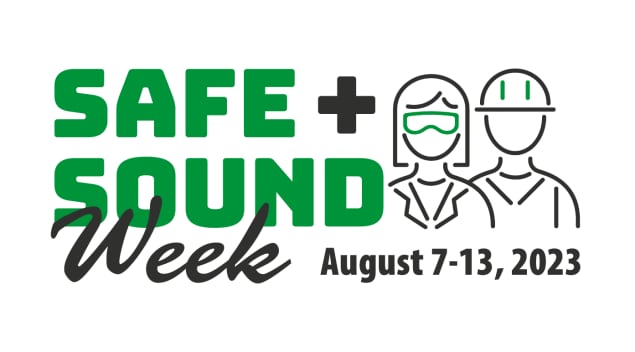eNews: Volume 21, Number 4 (August 2023)
Volume 21, Number 3 (July 2023)
From the Director’s Desk
John Howard, M.D., Director, NIOSH
International Overdose Awareness Day & Worker Safety and Health
Our nation’s workers have faced many difficult challenges over the last few years, including the unrelenting rise in drug-related overdose deaths. During the pandemic, for the first time ever, more than 100,000 Americans died from a drug overdose during a 12-month period. These increases were mostly driven by synthetic opioids, which are extremely potent and commonly found in the illegal drug supply. To recognize International Overdose Awareness Day on August 31, I wanted to share some overdose information and resources we have for workplaces.
Each day, overdoses involving synthetic opioids like fentanyl kill more than 150 people. A rising number of overdose deaths have also been linked to xylazine, a tranquilizer not approved for use in humans. Xylazine is especially dangerous when combined with opioids like fentanyl. Due to its impact on the opioid crisis, fentanyl mixed with xylazine has been declared an emerging threat by the White House’s Office of National Drug Control Policy. On July 11, the White House released a National Response Plan to coordinate a whole-of-government response against this threat.
A National Safety Council survey found 75% of employers say opioid use has impacted their workplace. However, only 17% report being extremely well-prepared to address the issue. Our work aims to help employers, managers, and workers address this challenge.
NIOSH has developed a fact sheet specifically for workplaces titled Using Naloxone to Reverse Opioid Overdose in the Workplace. Naloxone (also known as Narcan) is a lifesaving medication that, when given in time, can reverse an opioid overdose. This fact sheet can help employers and workers recognize and respond to an overdose. It can also help employers decide if they should have a program making naloxone available in their workplace. Such a program is a vital component of any comprehensive Workplace Supported Recovery program or Recovery Ready Workplace.
Earlier this year, the U.S. Food and Drug Administration approved Narcan for over-the-counter use. This is the first naloxone product approved for use without a prescription. This paves the way for the life-saving medication to be sold directly to employers and other consumers in places like drug stores, grocery stores, and gas stations, as well as online.
You can make an impact now and throughout the year. Please share both the NIOSH and CDC overdose prevention work and resources with colleagues, partners, and loved ones. We invite you to join us in taking action to end overdose.
Submission of Mandatory Respiratory Health Examinations Among U.S. Coal Miners Participating in the Coal Workers’ Health Surveillance Program
NIOSH study authors: Noemi B. Hall, Laura Reynolds, David J. Blackley, A. Scott Laney
Why is this study important?
Coal workers’ pneumoconiosis, also known as black lung disease, and chronic obstructive pulmonary disease (COPD) are caused by breathing in coal mine dust. Avoiding exposure to this dust can prevent or limit the progression of these diseases. Detecting lung disease in coal miners as early as possible is important in preventing progression to more severe disease. Medical tests, including chest imaging with X-ray and lung-function testing with spirometry, are essential for early detection. To establish baselines for future comparisons, the 1969 Federal Coal Mine Health and Safety Act requires U.S. coal miners to receive a chest X-ray upon beginning work and then again three years later. Also, since 2014, Mine Safety and Health Administration regulations expanded these requirements to include spirometry.
How did you do the study?
Using data from the NIOSH Coal Workers’ Health Surveillance Program, we looked at records of completed medical tests for 115,093 participating miners who began mining during June 30, 1971, through March 15, 2019.
What did you find?
During the time period reviewed, most new coal miners did not receive the required baseline medical tests. Results showed that 44% of new coal miners received required chest X-rays upon beginning work as a coal miner, and 13% received both the first- and third-year chest X-rays specified in federal regulations.
Since 2014, initial X-rays increased to 80% of new coal miners. However, only 12% of miners received the required X-rays three years later. Since spirometry specified in regulations was first offered, 17% of new coal miners received spirometry upon beginning work, and slightly less than 3% received it three years later.
What are the next steps?
It is important to raise awareness that monitoring and protecting lung health are critical throughout a miner’s career. These results show that raising awareness among new miners about the importance of baseline testing is an important need.
Occupational Exposure to Per- and Polyfluoroalkyl Substances: A Scope Review of the Literature From 1980–2021
NIOSH study authors: Brian T. Christensen and Miriam M. Calkins
Why is this study important?
Exposure to synthetic “forever chemicals,” or per- and polyfluoroalkyl substances (PFAS), is associated with an increased risk of cancer and other diseases. These chemicals do not break down easily, persisting in water and soil for years.
For more than seven decades, manufacturers have used PFAS in a wide range of applications. These applications include as aids in processing materials during manufacturing and in products that people use every day. From firefighting foam to stain-resistant clothing, medical devices, and personal care products, PFAS can be found throughout consumer and work environments.
How did you do the study?
We searched four scientific databases at the CDC Thacker Library for papers published during 1980–2021 on work-related exposure to PFAS. Our search yielded 2,574 papers, with 92 papers meeting the requirements for our study. To identify patterns of PFAS exposure, we compared and summarized the results of the papers by occupational setting, PFAS type, method of collecting samples, findings, and other factors.
What did you find?
Workers employed in PFAS-based chemical manufacturing had the highest levels of exposure. However, PFAS exposure occurred across occupations, including office workers, fishermen, textile mill workers, barbers, and metal plating workers. Most of the PFAS-exposure studies measured blood levels of the chemicals, although some also measured exposure levels in air, dust, and urine samples.
What are the next steps?
This study highlights the importance of measuring exposure to PFAS, including new types, among workers in manufacturing and other work settings. Identifying patterns of work-related exposure is critical to establishing guidelines to protect workers.

Image source Penington Institute
Director’s Desk
Research Rounds
- Submission of Mandatory Respiratory Health Examinations Among U.S. Coal Miners Participating in the Coal Workers’ Health Surveillance Program
- Occupational Exposure to Per- and Polyfluoroalkyl Substances: A Scope Review of the Literature From 1980–2021
Highlights
- Preparing for Hurricane Season
- Safe + Sound Week 2023
- NIOSH Announces Phase One Winners of the Respirator Fit Evaluation Challenge
- National Academies of Sciences, Engineering, and Medicine Launch Workshop Proceedings
- Commercial Fishing Safety Research & Training Grants Deadline Is August 29
- Register for the Next Total Worker Health® Webinar!
Monthly Features
John Howard, M.D., Director
Christina Spring, Editor in Chief
Managing Editor
Tanya Headley
Section Editor
Anne Blank, Research Rounds
Kiana Harper, Highlights & Monthly Features
Contributing Editors
Sarah Mitchell
Copy Editor
Cheryl Hamilton
Technical Support
Steve Leonard, Technical Lead
Thomas Ebert, Web Developer
To receive the NIOSH eNews email newsletter, enter your email address:

Photo by ©Getty Images
Preparing for Hurricane Season
As we approach the height of hurricane season, emergency responders can use NIOSH resources on storm and flood response to make sure they are prepared for any disaster. The NIOSH Hurricane Key Messages document is available in several languages and offers guidance to help protect the health and safety of emergency response and recovery workers.

Image source Department of Labor
Safe + Sound Week 2023
Join OSHA, NIOSH, and other partners for Safe + Sound Week 2023, August 7–13! Safe + Sound Week is a nationwide event held each August that recognizes the successes of workplace health and safety programs. The event also offers information and ideas on how to keep America’s workers safe. This year, Safe + Sound Week will provide resources for businesses on mental health and well-being. Register to join us!
NIOSH Announces Phase One Winners of the Respirator Fit Evaluation Challenge
NIOSH has selected 20 winners for the first phase of the Respirator Fit Evaluation Challenge. The Challenge is a three-phase competition aimed at improving respirator fit evaluation. It seeks practical solutions that deliver real-time information on filtering facepiece respirator fit. Read the full NIOSH update to learn more about the winners.
National Academies of Sciences, Engineering, and Medicine Launch Workshop Proceedings
The proceedings from the NIOSH sponsored a National Academies of Sciences, Engineering, and Medicine March public workshop are now available. The goal of the workshop was to examine standards gaps related to protective equipment (PPE) and personal protective technology (PPT). The workshop also explored ways to support public health supply chain resilience by updating the U.S. system for standardizing PPE and PPT.
Commercial Fishing Safety Research & Training Grants Deadline Is August 29.
NIOSH is now accepting applications for commercial fishing safety research and training grants. Interested applicants can find the latest information on the NIOSH Commercial Fishing Occupational Safety Research and Training Program webpage and frequently asked questions. Learn about the $6 million that NIOSH and the U.S. Coast Guard have for commercial fishing safety research and training in fiscal year 2024. Also, read about the diverse work of current grantees. For additional questions, contact Bridgett Garrett.
Register for the Next Total Worker Health® Webinar!
Register today for a free webinar on Thursday, August 24, at 1 p.m. (ET). Jonathan DePierro, PhD, associate director of the Center for Stress, Resilience, and Personal Growth, will present. He will discuss the center’s programs used to improve the psychological well-being of over 40,000 employees and trainees in the Mount Sinai Health System in New York City. A moderated question-and-answer session will follow. Free continuing education is available.
New Communication Products & Reports
Booklet
FACE Reports
- 2022 Annual Report—Occupational Fatalities in Kentucky
- Demolition Laborer Dies in Fall Through Skylight—Kentucky
- Heavy Equipment Operator and Rancher Crushed by Excavator—Oregon
- Spotter Loses Fingertips in Excavator Quick Coupler—Washington (slideshow)
- Sweeper Crushed in Hay Press Bale Elevator—Washington (slideshow)
NIOSH Science Blog
Sign up to receive updates about new NIOSH Science Blogs delivered directly to your inbox! Below are the blogs from last month:
Federal Register Notices
Proposed Data Collection Submitted for Public Comment and Recommendations: Heat-related Changes in Cognitive Performance
The notice was posted on June 16. Comments must be received by August 15.
Advisory Board on Radiation and Worker Health (ABRWH), National Institute for Occupational Safety and Health (NIOSH)
The notice was posted on July 5. Comments must be received by August 9. The meeting will be held on August 16.
Request for Public Comment on Two Draft Immediately Dangerous to Life or Health (IDLH) Values, for Hydrogen Bromide and Hydrogen Iodide
The notice was posted on June 22. Comments must be received by August 21.
World Trade Center Health Program; Youth Research Cohort; Request for Information
The notice was posted on April 26. Comments must be received by August 24.
News from Our Partners
New Safety Program For Warehouses, Distribution Centers, and High-risk Retail Workers
The U.S. Department of Labor’s Occupational Safety and Health Administration recently launched a national emphasis program. The program will help prevent workplace hazards in warehouses, processing facilities distribution centers, and high-risk retail establishments.
New Web Resource on the Dangers of Heat Exposure
Louisiana’s Occupational Heat-Related Illness and Injury Program launched a new webpage. It offers links to data and resources aimed to protect workers and communities from the dangers of heat.
Conferences, Meetings, Webinars, & Events
This page provides a list of publicly available occupational safety and health-related conferences, meetings, webinars, and events sponsored by NIOSH as well as other government agencies, and nongovernment agencies, such as universities, professional societies, and organizations.
